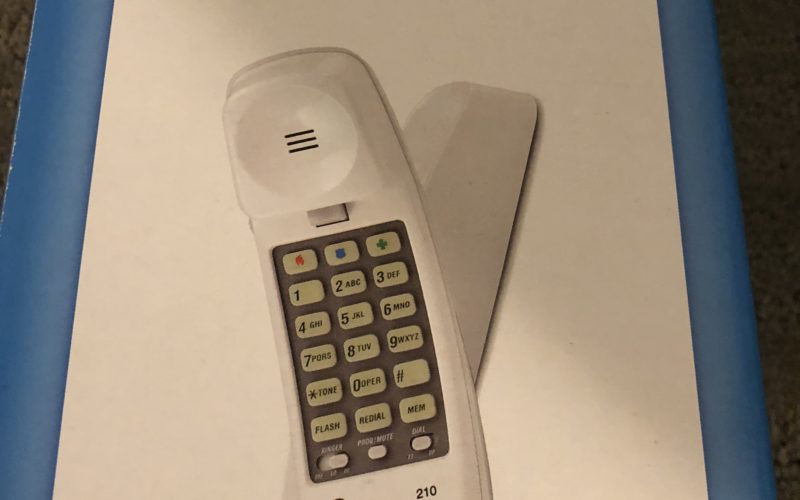Arguably the most common* phone in use today, this was designed for hospitals, apartment gate systems, and other multi-use (aka disposable) locations. As I understand it, it was literally designed to be thrown away as needed.
From Wikipedia:
After the introduction of the popular Princess telephone line, in 1959 and the early 1960s, the design motivation for the Trimline series was to create an alternative design that was stylish and easier to use than a traditional telephone. This was accomplished by moving the dial from the telephone’s base to the underside of the handset, between the earpiece and mouthpiece. The same concept was later used for cellular telephone and cordless telephone models. To miniaturize the rotary dial sufficiently to fit in the Trimline handset, the designers invented an unusual moving fingerstop. Like in the Princess line, the dial was lit when the handset was removed from the base. The Trimline was also one of the first phones to use the predecessor of the now-ubiquitous RJ11 modular phone plug and jack.
First introduced in 1965, the Trimline included a lighted dial and was encased in a sleek, curved plastic housing that took up much less space than earlier Western Electric telephones. However, the glass-smooth and shallowly-curved plastic handset proved difficult to retain between cheek and shoulder for hands-free communication without slipping, and this problem was never corrected over the life of the model line. Cushioned clamp-on adaptors were manufactured and sold by third parties to make it easier to cradle the handset, but these add-ons would greatly compromise the aesthetic appearance of the telephone.
The first Trimline models used incandescent dial lights powered by a power transformer plugged into a standard 120VAC outlet. The bulky transformer and the need for a conveniently-placed 120-volt outlet was criticized by many consumers, but was necessary because of the power demands of the incandescent light bulb. Years later, Western Electric redesigned the Trimline to use a low-power green LED backlit dial powered by current from the phone line, eliminating the need for a separate transformer. Always eager to re-use its older stocks of turned-in rental phones, AT&T later repainted and sold early-model non-LED Trimlines as “non-lighted” models, without a transformer.[citation needed]
Variants[edit]
The Trimline handset was produced in both rotary dial and Touch-Tone versions. Rotary dial Trimline production began in late 1965 and Touch Tone dials were added the following year in mid-1966. The Trimline base was available in desk-top and wall-mount versions. The handsets and bases were interchangeable. The Trimline was the first US telephone to achieve some design recognition in Europe, where it was referred to as the “Manhattan” model or the “Gondola”.[citation needed] Today, similarly designed telephones are sold by many companies. AT&T retained the Trimline name for the later “Trimline III”, a more compact successor featuring squared corners and straight lines.
In the 21st century, Advanced American Telephones produces the Trimline models 205, 210 (based upon original design), and the 265, under license from AT&T.

